Bicycle tour of Mie, a beautiful country: geinocho ・Seki version】A short cycling tour based on Anno Dam: Tokaido Sekijuku and over mountain passes.
掲載日:2019.10.16
TsuCity Lake Tinjang in the northwest is the dammed lake of the Anno Dam, a water bottle at TsuCity, and its shores are famous for its cherry blossoms. Nearby is Kawachi Valley, known for its autumn foliage, and if you go a little further, you can visit Tokaido the inn town of Sekijuku, creating a cycling course full of attractions.
This time we will introduce a short course of just under 30km that concentrates these highlights.
There are some small mountain passes, and the ride is quite rewarding!
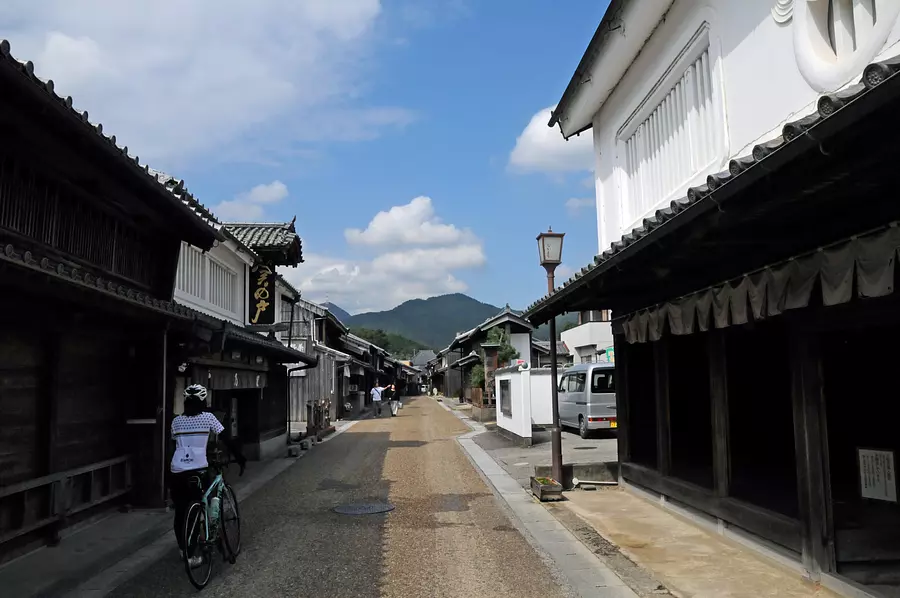
Nearby is the Kouchi Keikoku Valley, known for its beautiful autumn foliage, and if you go a little further, you can reach Sekijuku, an inn town on Tokaido, creating a cycling course full of attractions.
This time we will introduce a short course of just under 30km that concentrates these highlights.
There are some small mountain passes, and the ride is quite rewarding!
■Traveler bicycle writer Masanori Asano
I have been cycling for about 20 years. I love cycling as much as I love three meals and snacks. Because of his love for bicycles, he became a freelance bicycle writer. He rides his bicycle for work, and also enjoys racing and long rides in his private life.
■Travel companion Murakami (Mie Prefecture Tourism Federation)
I'm a beginner road bike rider who's only been cycling for about a year. Because of his job, he is knowledgeable about sightseeing spots and gourmet food in Mie Prefecture, and has an eye for delicious food.
ーーーーーーーーーーーー
What is “Beautiful Country Mie Bicycle Route Diary”?
Bicycle writer Masanori Asano, born and raised in Mie Prefecture, will introduce you to the charms of Mie Prefecture while cycling!
Click here for other articles on the “Beautiful Country of Mie Bicycle Route”!
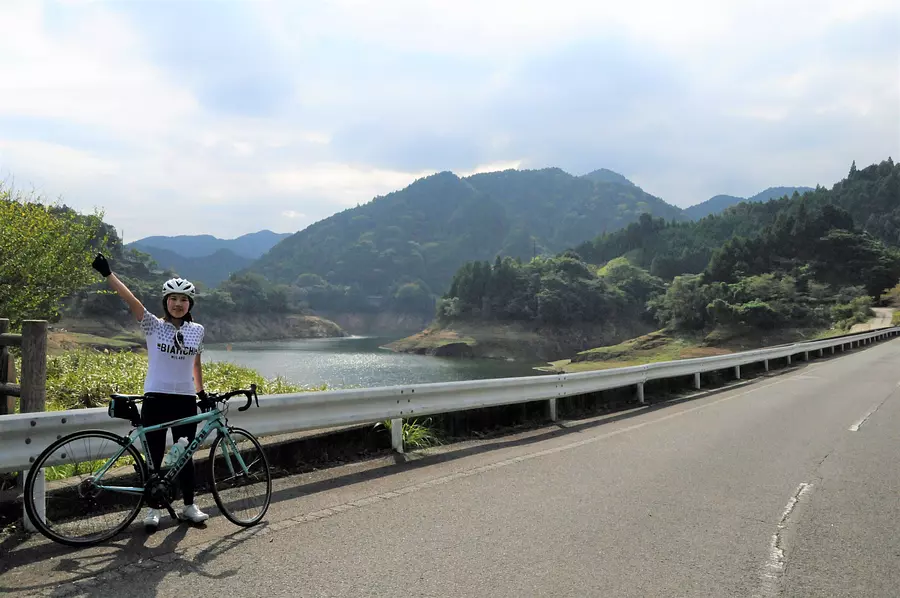
◆ Shakujoko
"It's the perfect cycling season! I would like to accompany you this time, so please introduce me to some courses that are recommended for beginners!"
I was contacted by Mr. Murakami from the Mie Prefecture Tourism Federation, and I was wondering if there have been too many difficult courses recently, so this time I'm thinking of a course with the goal of getting around 2 stars.
``How about a short course of just under 30 km that passes through famous spots for autumn leaves, goes to Sekijuku on Tokaido, crosses a gentle mountain pass, and enjoys delicious curry at the end?'' I suggested this course. is.
The starting point is Lake Shikujo.
This is a dam lake of the Ano Dam located upstream of the Ano River that flows through TsuCity.
It is known as a famous cherry blossom viewing spot, and it is truly spectacular when the cherry blossoms along the lakeshore are in full bloom. The shore of the lake is perfect for a cycling course, and it's a place I have fond memories of, when I first started cycling, a senior cyclist would often take me for a ride. I still come here for a run every now and then.
Well, when you're ready, let's go!
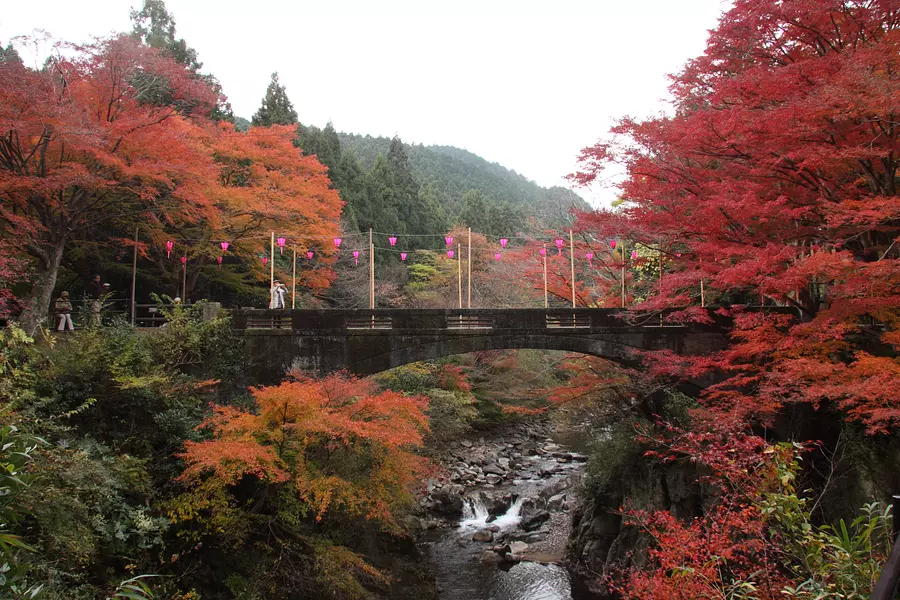
First, we take a leisurely ride along the lakeside road.
There are some small ups and downs, but I'm also warming up by spinning around in a light gear.
After going through some tunnels, it's an exhilarating descent! Even if you don't do anything, your speed will increase rapidly, but be careful not to jump too fast!
``Please control your speed by applying the brakes from time to time.It will be easier to apply the brakes if you hold the bottom of the drop handlebars,'' I advised Mr. Murakami, and we arrived at Kawachi Valley in no time.
At the time of our interview, it was still too early for the leaves to turn red, but this place is known as a famous spot for autumn leaves.
The photo was taken some time ago, and you can enjoy the beautiful scenery like this during the autumn leaves season.
By the way, nearby is the ancient temple Chotokuji, where you can enjoy Ryuozakura, a natural monument of Mie Prefecture.
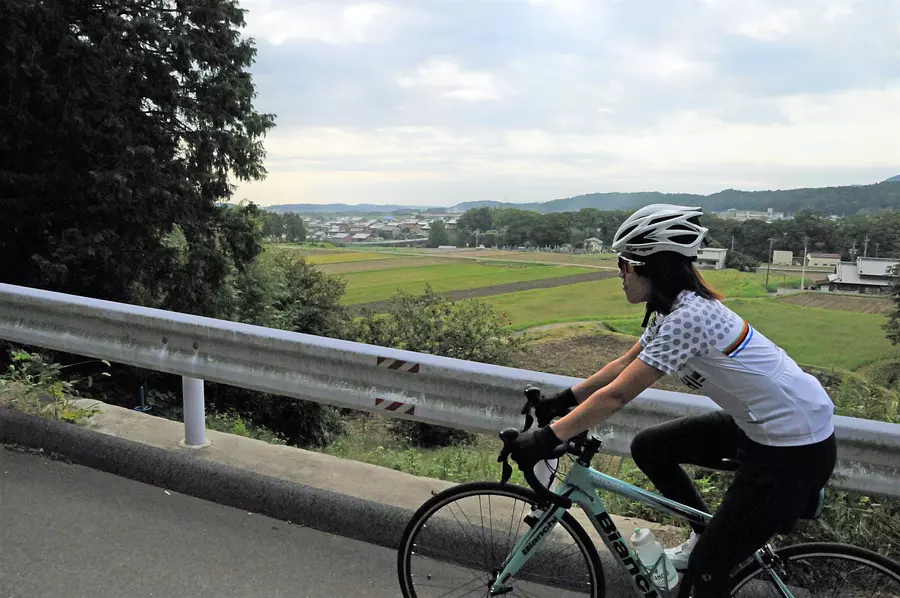
Turn left at the three-way intersection near Kawachi Valley and head for Ishiyama Kannon.
You will enter a residential area, but if you don't miss the signs, you won't get lost. If you have a GPS cycle computer, you can feel safe by downloading the route data provided at the link on this page and using Route Navi!
It's a short climb up to Ishiyama Kannon.
"Eh, it's uphill... How long will it last?" Murakami seemed a little dissatisfied.
There is a longer climb at the end of this course, so I will teach you how to conquer it while you still have time.
``In addition to using a lighter gear and climbing without worrying about speed, you can also sit a little further in front of the saddle when going uphill so that the weight of your legs is transferred to the pedals, which will make it a little easier to climb the slope. The harder it gets, the more you can move your hips toward the front of the saddle, and when that becomes difficult, switch to standing.
When I showed them a sample and asked them to try it out,
"Ah, it's true! I might be able to do this!" Murakami seemed to agree.
The trick to cycling is not to push yourself too hard uphill.
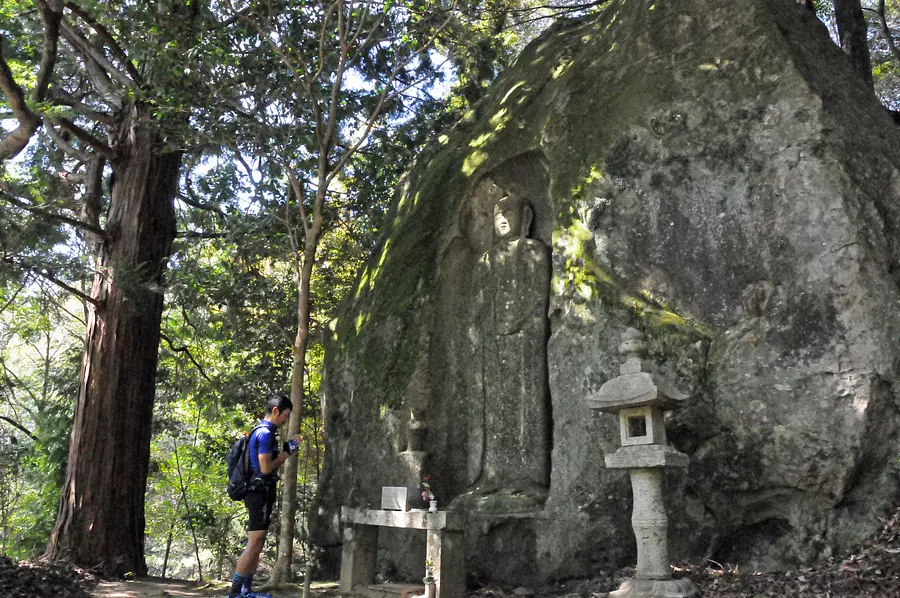
Ishiyama Kannon is located on a rocky mountain made of almost a single stone, and about 40 Buddha statues are carved into the rock surface. It is said to be one of the largest collections of Buddha statues in the country.
Many of the carved stone Buddha statues are Kannon statues, and among these, the standing statues of Sho Kannon Bodhisattva, Jizo Bodhisattva, and Amida Nyorai are designated as tangible cultural properties of the prefecture.
There was a course to visit these stone Buddha statues, but since it was difficult to walk in road bike shoes, I walked a short distance to visit a fine stone Buddha statue, and prayed that I would be able to enjoy my cycling trip safely. did.
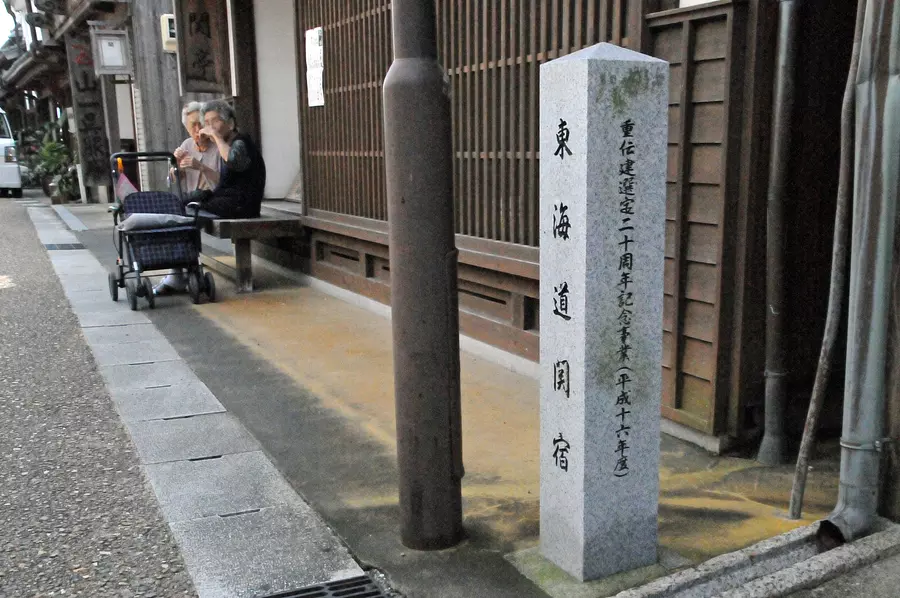
◆ Sekijuku
After paying our respects, we headed for Sekijuku, which is well known as the lodging place of Tokaido.
Go north from Ishiyama Kannon and turn left when you merge with Prefectural Route 10. All you have to do is continue along the road, but be careful as this area is close to the Seki Interchange and there is a lot of traffic.
After crossing National Route 1 and climbing a short but steep hill, you will see a milestone and an old townscape. This is Sekijuku on the old Tokaido.
This area has been designated as a nationally important preservation district for groups of traditional buildings, and is lined with old folk houses with latticework. Some locals sit side by side under the eaves of the buildings along the street and have a well-lit meeting.
Time seems to flow differently here. Even though I had just been near the national highway where large trucks were whizzing by, I felt as if I had traveled back in time.
Sometimes I stroll around town while riding my bicycle.
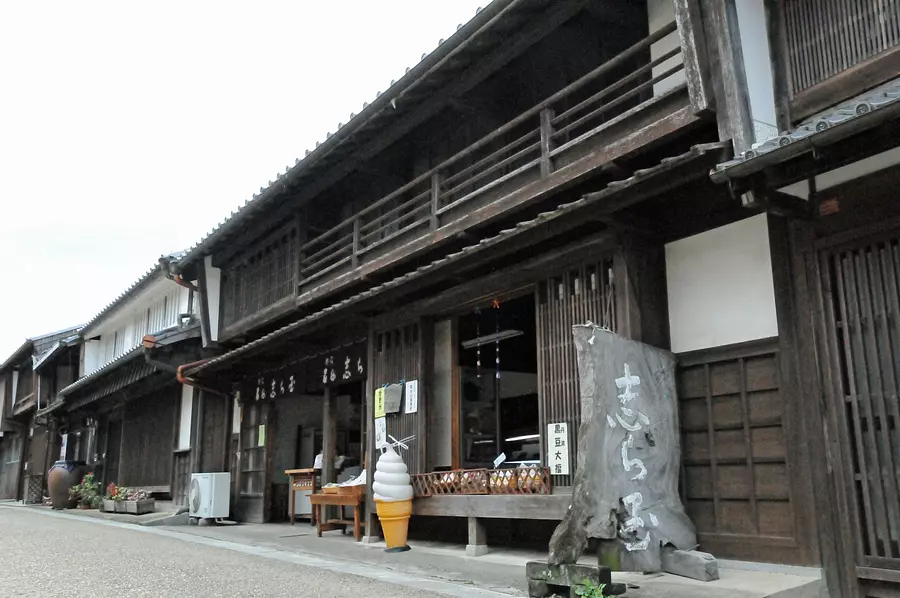
“Since we’re here, let’s have a drink while enjoying Kaido’s famous mochi!”
Former post towns along roads that pass through the prefecture, such as Tokaido and Sangu Kaido roads, are known for their famous mochi, and Sekijuku is no exception. You can still enjoy famous mochi such as Shiradama and Sekinoto To which have been loved by the common people since ancient times.
I'm cycling, so I'm sure I'm burning a lot of calories, so I'd like to have both.
On this day, Fukagawa-ya, a well-known Seki-no-to Sekinoto, was closed, but as we continued a little further west, we came across a quaint building and a wooden sign that read ``Shiradama.''
This is Maedaya Seika, which is famous for Shiradama.
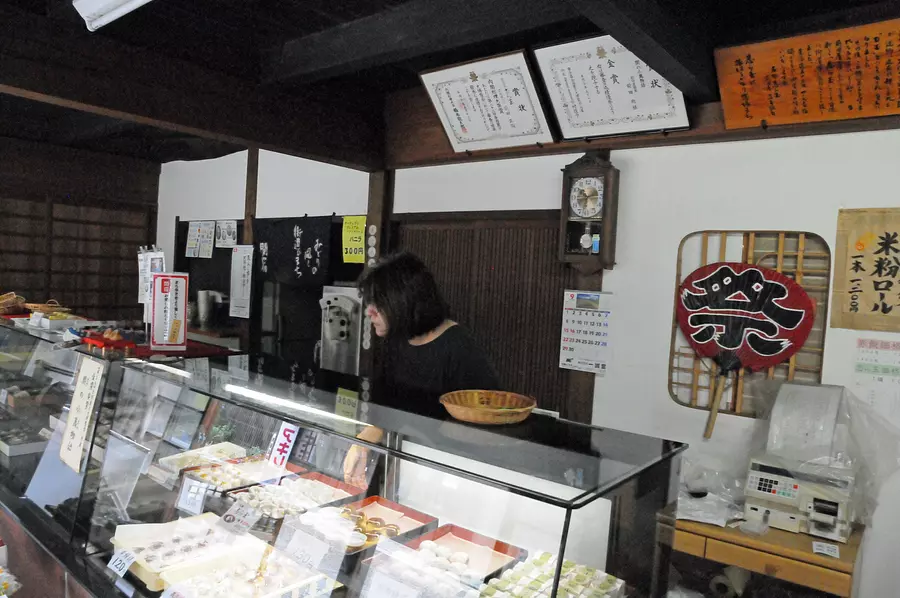
The good thing about it is that it's easy to eat at around 100 to 200 yen each.
It is a shop with a friendly atmosphere, where not only tourists from outside the prefecture but also locals come to buy a small gift.
There was also a space in the store and under the eaves of the store where you could sit and eat in peace!
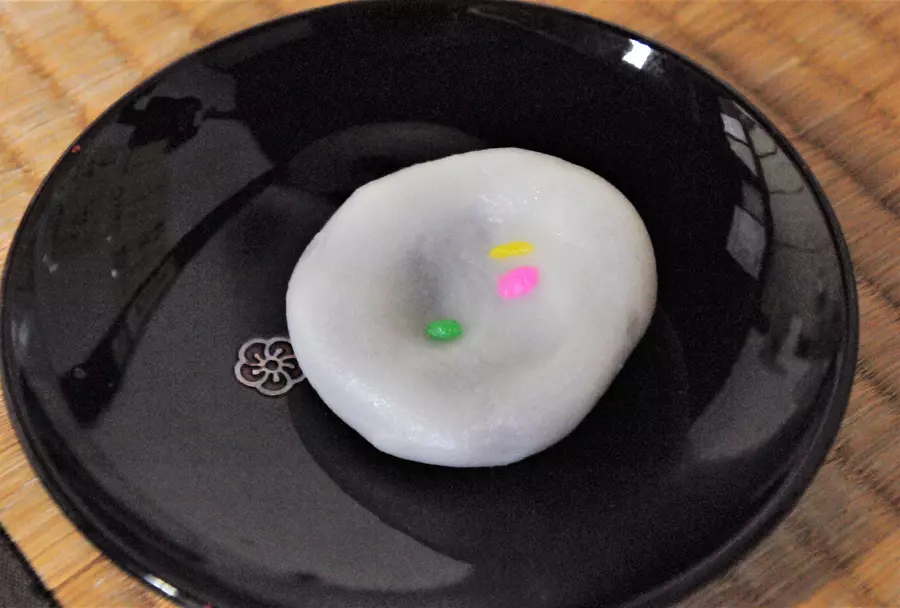
``It is said to be modeled after the three sacred treasures, the magatama, and the green beads symbolize spring, the red beads are summer, the yellow beads are autumn, and the white mochi is winter, symbolizing the four seasons,'' Maeda said. Minako Maeda of Ya Seika told me about it.
It feels simple yet elegant.
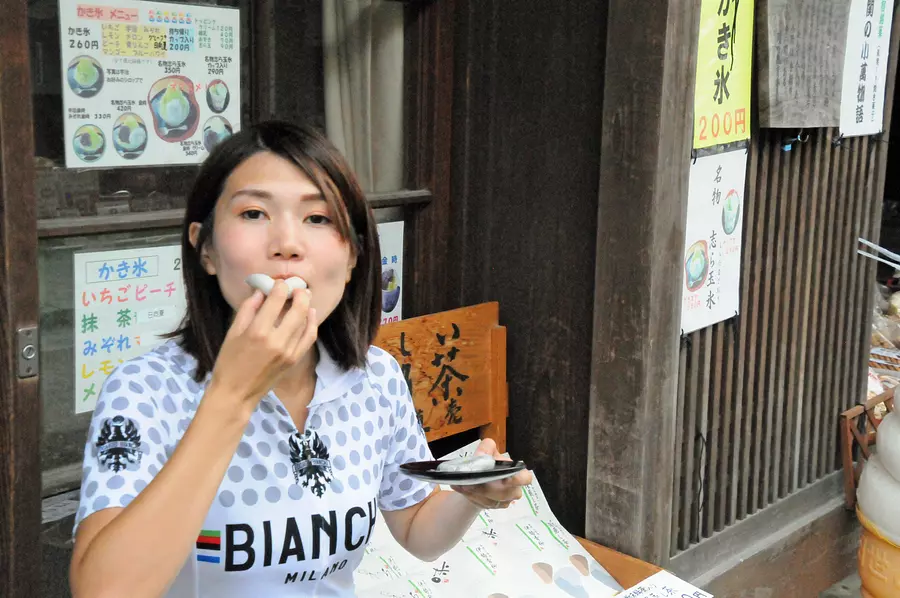
"It's fluffy, sweet, and delicious!"
“I think I could easily eat about 5 of these.”
Sweets while cycling are so delicious that they really permeate your body.
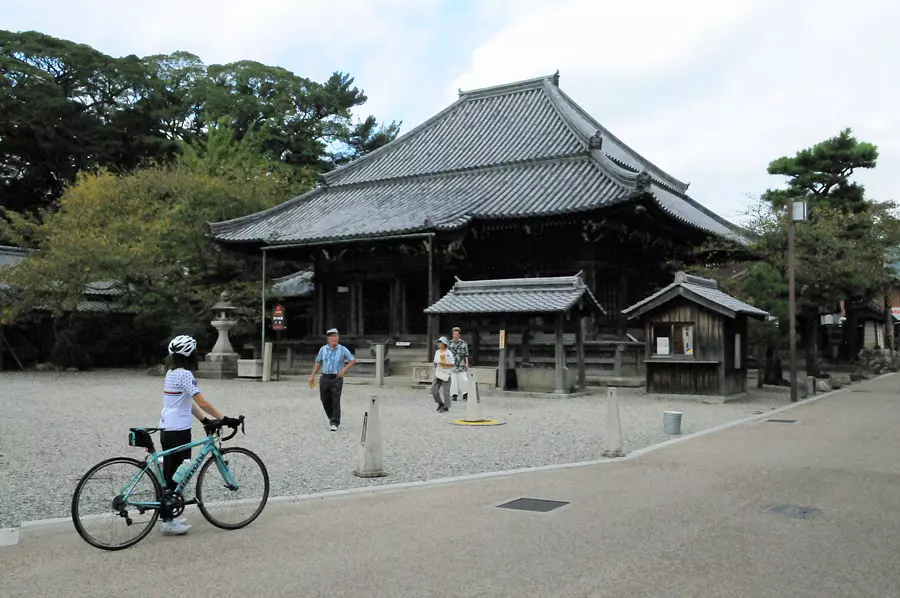
Once you feel refreshed after receiving some Shiradama, let's take a walk around Sekijuku.
If you go further west from Maedaya Seika, you will see a magnificent temple on your left. This is Seki Jizoin.
Seki Jizo-in is said to have been founded by Gyoki in 741 (Tenpyo 13). It is said that it was worshiped not only by locals but also by travelers who traveled Tokaido.
The three buildings, the main hall, bell tower, and Aizen-do, which have been designated as nationally important cultural properties, are worth seeing, and they still have a strong presence as symbols of Sekijuku.
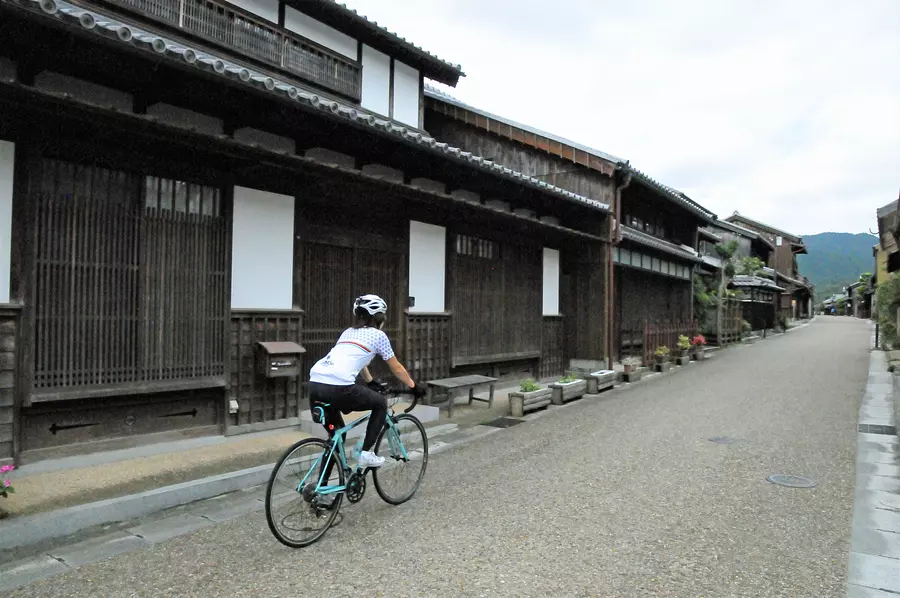
After passing through a residential area lined with old houses with latticework, you will reach Oiwake, the western end of Sekijuku. Oiwake is a fork in the road, and Oiwake in the west is a fork in the road Tokaido and Yamato Kaido.
Here, the old Tokaido connects with the modern version of Tokaido /National Route 1 and National Route 25, which was Yamato Kaido.
Our group will now proceed to National Route 25.
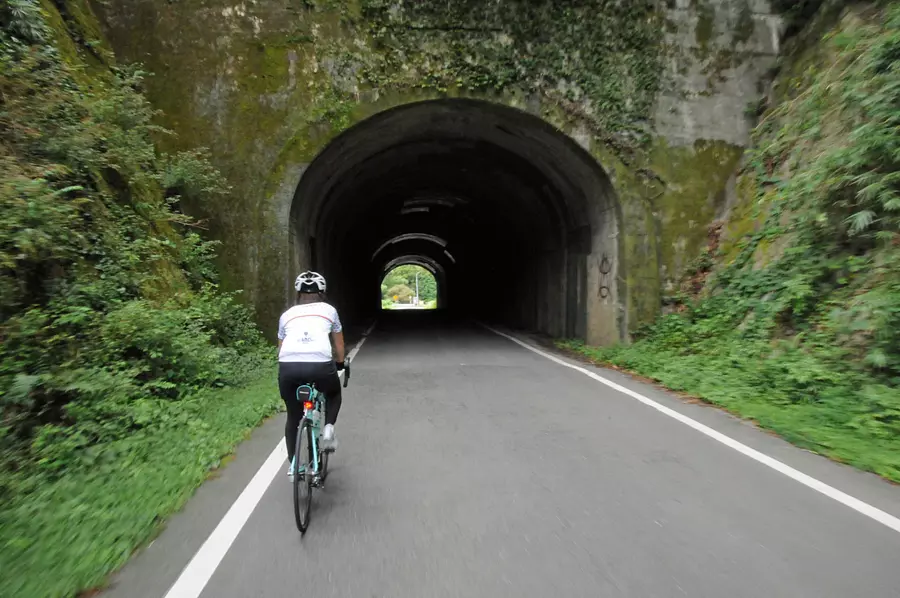
Although National Route 25 is a double-digit national highway, traffic volume is extremely low.
This is because the Meihan National Highway, which runs parallel to this road, is also National Route 25, and many cars drive there.
Proceed west parallel to the JR Kansai Line while looking at the kabuto River, a tributary of the Suzuka River, on your left.
The idyllic scenery of a mountain village spreads out, and it's as if the scenery is telling you to take a leisurely ride.
The road has gentle ups and downs, and there are even short tunnels, so you won't get tired of running on it.
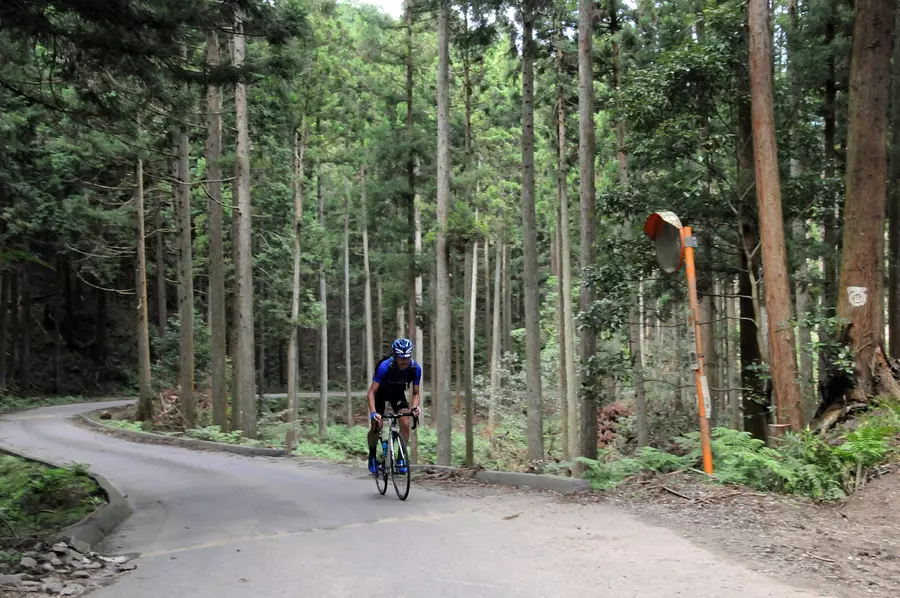
Eventually you will see the information sign for the Mukai Interchange on the Meihan National Highway, so turn left.
After passing through the Meihan National Highway, the climb up Yuzunoki Pass, the most difficult part of this course, begins.
The area where you pass under the Meihan National Highway is a point where it is easy to get lost. Please proceed while paying attention to the signs so as not to end up on the Meihan National Highway.
Yunoki Pass is about 3km from the start of the climb to the peak of the pass, and the average gradient is about 5%.
This mountain pass is relatively easy to climb, even for those who are not good at climbing. Mr. Murakami is also not very good at climbing, so one of the aims of creating this course was to start with this mountain pass and gradually get used to climbing (lol).
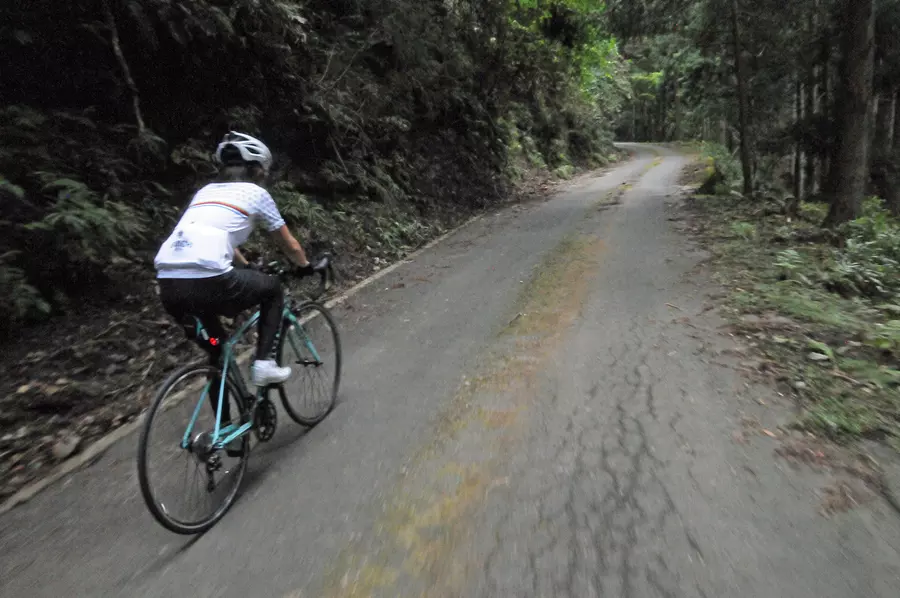
“Sit near the front of the saddle, right?”
I'll put into practice the tips I've learned so far for climbing and continue climbing at a steady pace.
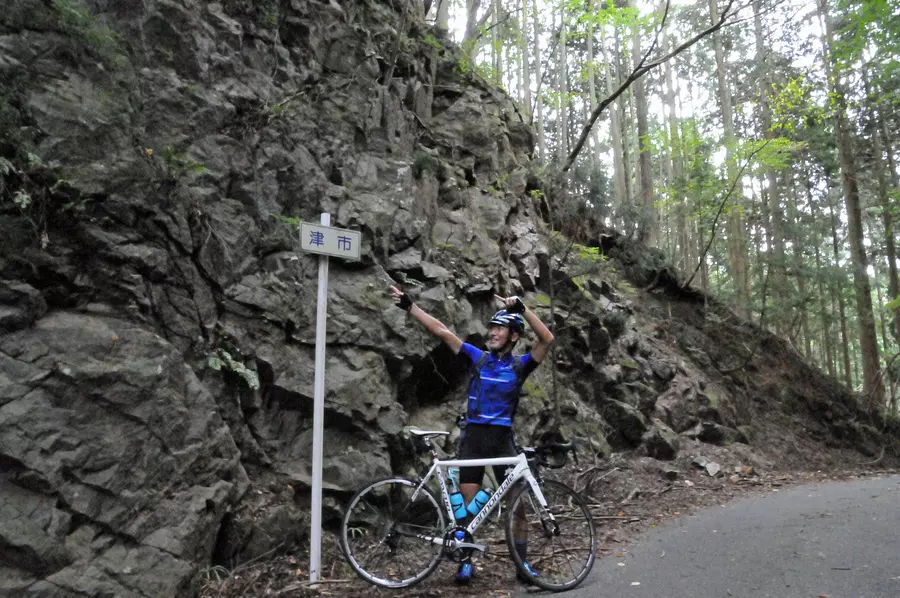
"We've arrived!"
We finally reached the peak of Yunoki Pass!
“Ah, I’m tired, but I feel a sense of accomplishment when I climb up with my own legs!”
Yes, if you keep moving your legs steadily, you can eventually climb any mountain pass!
To commemorate our ascent, we took a commemorative photo at the sign on the border between KameyamaCity and TsuCity. The only thing left to do is go down to the Anno Dam, but the road is rough, so be careful.
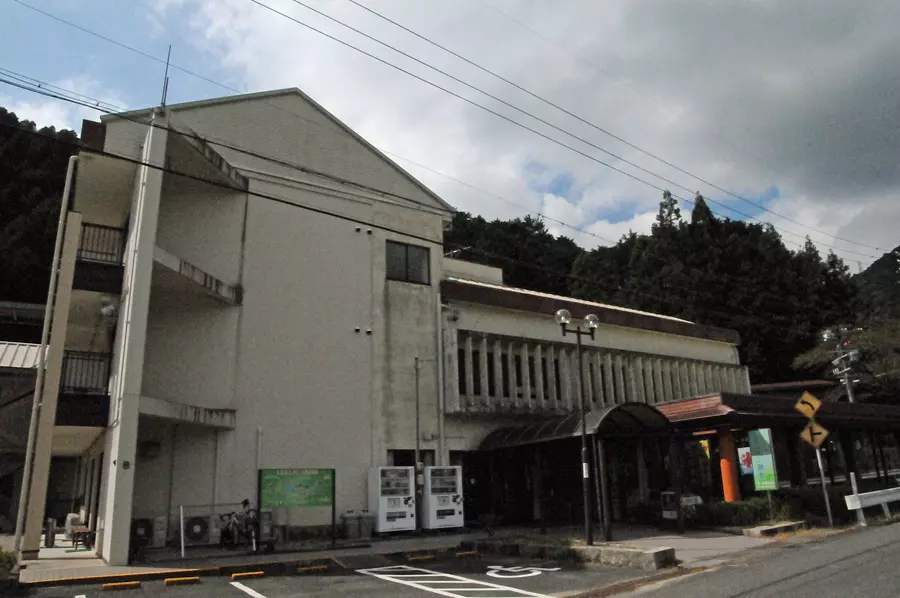
As you descend from Yuzunoki Pass towards Tsu, you will soon see a three-way intersection in front of you.
By turning left here and heading down with the river on my left, I was able to return to the shore of Lake Shikujo, where I had started this morning.
"I'm hungry after crossing the mountain pass. Let's have lunch at Shikujo Lake Suisou!"
Shikujoko Suiso is a restaurant located in a renovated building that was once Kawachi Elementary School, and boasts a great location overlooking Lake Shikujo.
There are also bicycle parking racks for sports bikes, which are often used by cyclists.
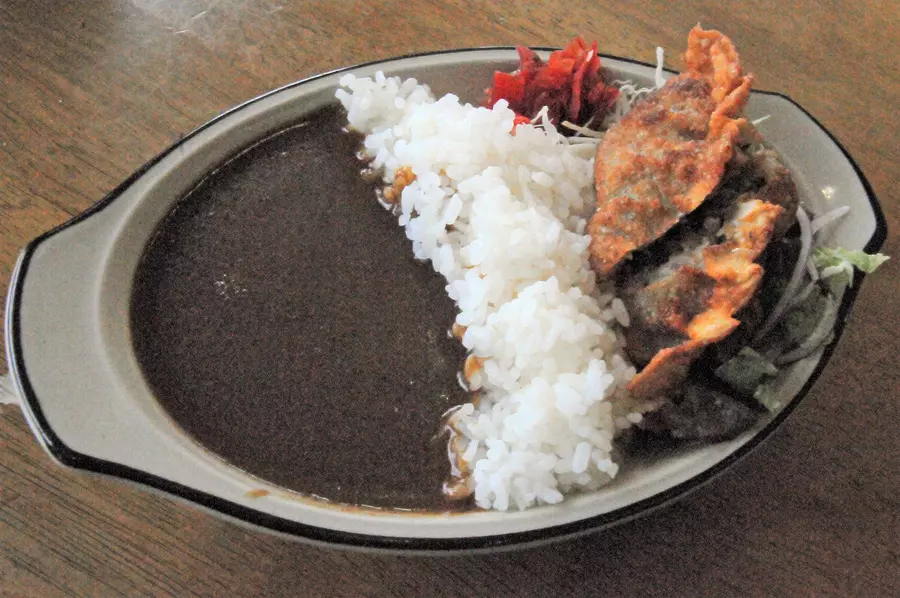
The rice seems to represent the dam and the lake in the curry, and the salad represents the greenery of the mountains around Mt. Shukjogatake.
I ordered the fried gyoza, which has its roots in school lunches, with TsuGyoza.
TsuGyoza was created when I was in elementary school, and when I saw it for the first time, I was shocked by its size. I only ate it a handful of times until I graduated from elementary school, but it had such an impact on me that I still remember it vividly even now as an adult.
TsuGyoza here contains dried sweet potato stems called Zuiki, a specialty of geinocho. It was far more delicious than the school lunch I vaguely remember.
The curry is also just the right amount of spiciness, making the meal more enjoyable. Needless to say, I devoured it completely in no time.
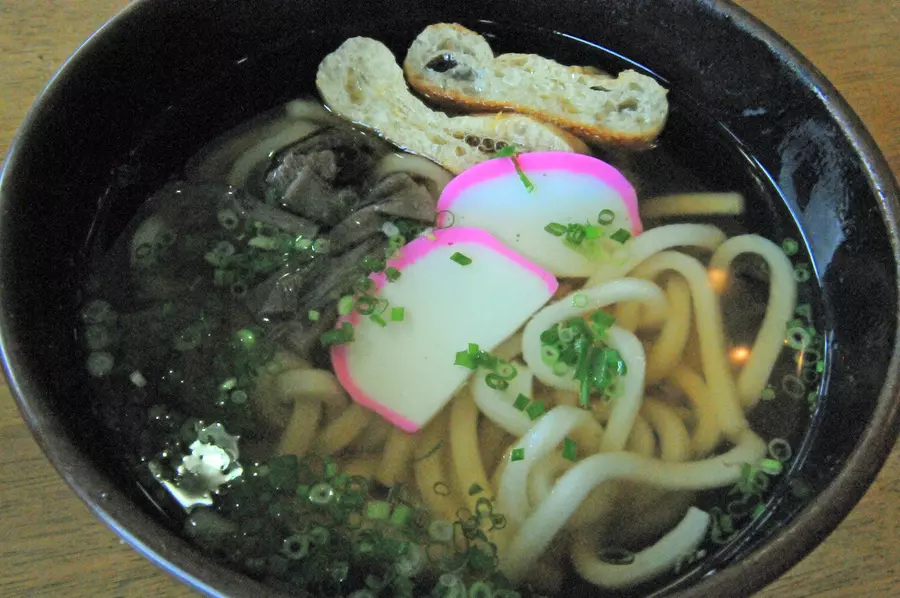
Sanuki-style udon with zuiki.
“The taste of soup stock is so light that it soaks into your body.The texture of the mushrooms is also nice!”
I have also experienced that after sweating a lot from running, udon and other soups taste really good. It's probably because your body craves salt.
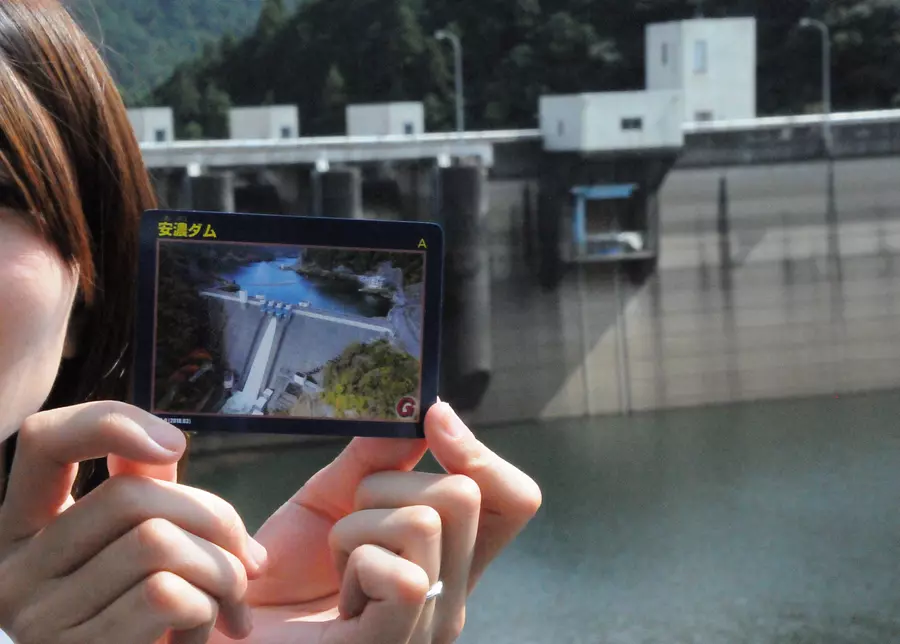
Personally, I feel like I haven't run enough, so I head to Anno Dam to fill up after dinner. The target is the dumb card.
Dam cards are cards distributed free of charge at dams all over the country, with a photo of the dam on the front and various data including the dam's size on the back.
Some people may be hearing about it for the first time, but it seems to be quite famous among dam enthusiasts, and some cyclists collect dam cards from various places while cycling!
We visited the Ano Dam management office and got a dam card too!
According to a staff member, the Kimigano Dam may also be distributing it among the dams in TsuCity.
Now that I think about it, I remembered that I had attended the course last time, and I thought it was a shame.
``This course had a lot to offer, and it was a good challenge to run! However, the climb was a little tough...'' said Murakami.
Mie Prefecture still has many attractions and attractive courses, so we will continue to introduce such courses!
Today's route
Article creation / Masanori Asano
ーーーーーーーーーーーーーーーーーーーーーーーーー
◎ Bicycle writer goes! Beautiful country of Mie: Bicycle route notes
・ [Matsuzaka Edition] Relaxing cycling to enjoy Matsusaka beef gourmet food!
・ [HigashiKishu Edition] Run along Shichirimihama Beach and enjoy the delicious food of Kumano!
・ [Shima Edition] Cycling along the seaside, visiting lucky charms and gourmet food!
・ [TsuCity Misugi Edition] Cross the fresh green hills and visit the post station on Ise Honkaido Road
・ [Eastern Iga Edition] Hill climb and gourmet food in a hilly mountain village
Related spots
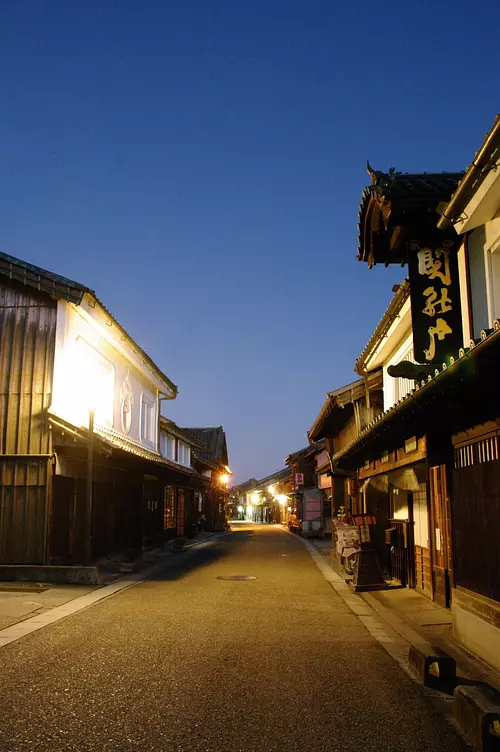
Tokaido Sekijuku
Northern forces
KameyamaCitySekijuku flourished as the 47th post town on the 53 stations Tokaido, and still retains the atmosphere of that time. More than 200 townhouses built from the late Edo period to the Meiji period still exist here, and it was selected as a nationally important preservation district for groups of traditional buildings (selected in 1981) and one of Japan's top 100 roads (selected in 1986). It has been selected as a tourist destination and has a lot to offer. Recently, it has become popular as a photogenic spot that looks great on Instagram. Why not enjoy a relaxing walk around town?
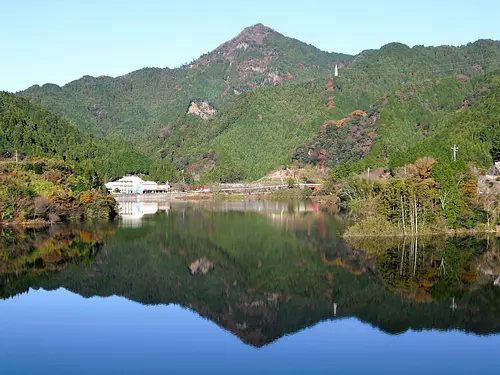
Lake Shikujo/Lake Shikujo Fureai Park
Chunan group
TsuCityA beautiful lake at the source of the Anogawa River. There are parks in the surrounding area, and there are tennis courts at Fureai Park near Shikujokosuiso. When the water level drops, a stone daruma appears from the surface of the lake, giving it a humorous look. The name of this park comes from Mt. Shujogatake, a sacred mountain famous for praying for rain. From Shikujoko Suiso, you can see the calm scenery of Lake Shikujo and Mt. Shikujogatake, and it is filled with a tranquil atmosphere. View this post on Instagram [Official] Post shared by Mie Tourism (Mie Prefecture Tourism Federation) (@kankomie) - April 16, 2020, 5:25am PDT
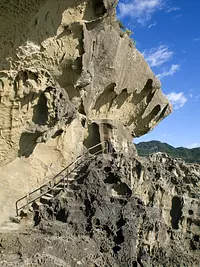
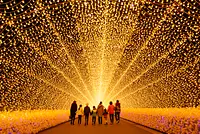

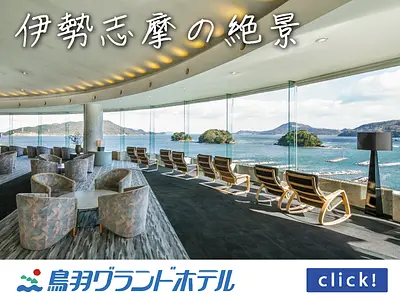
.jpg)
